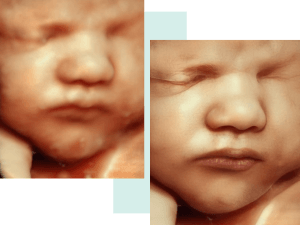Research
HD Enhanced: Is it Better than Other Prenatal Ultrasounds?
Congratulations! You’re pregnant! If you’re like most soon-to-be parents, you’re probably excited to take a glimpse of your little one.
And that is what prenatal ultrasounds are for. It’s a special moment for you and your partner–a chance to see how your baby develops in the womb.
However, did you know that there is now HD Enhanced ultrasound?
Before diving into HD Enhanced ultrasound, let’s look at the other types of prenatal ultrasound.
2D Ultrasound
2D ultrasound is the most common type of prenatal ultrasound. It’s the traditional black-and-white image you typically think of when you think of ultrasound.
Despite many advancements in ultrasound technology, 2D ultrasound is still the standard in most obstetrician offices.
They are mainly used for medical ultrasounds because they have high contrast and are easy to interpret and measure organs and volumes.
3D Ultrasound
A 3-D ultrasound shows your baby in three dimensions. And because of this, it allows you to see your baby’s features in greater detail.
It also has several other advantages, such as detecting congenital defects or abnormalities easier.
But in general, it takes a lot of computer power and your baby to be still in order for the ultrasound to create a 3D image of your baby.
Is 3D Ultrasound better than 2D?
The answer to this question is controversial. Most parents feel that 3D ultrasound provides a more realistic image of their baby.
However, the significance of 2D ultrasound should not be underestimated. Doctors use 2D ultrasound to measure and assess the baby for any anomalies.
3D ultrasound, on the other hand, is mainly used for bonding and to better understand what the baby will look like.
Knowing what your baby looks like and who it resembles can help in your pregnancy journey. Plus, it helps you form an even deeper bond with your baby.
Creating a bond often aids in developing and stimulating your body in preparation for the birth of your child.
So, although 3D ultrasound is a great way to get a better idea of what your baby will look like, it is not necessarily better than 2D ultrasound.
For 3D ultrasound, it is used for specialised medical purposes, such as when a doctor is looking for an overall abnormality (such as a cleft lip), but otherwise, they are two distinct processes aimed at different studies.
4D Ultrasound
4D ultrasound is similar to 3D ultrasound, but it captures more information in sequence to create a video.
This can be a special moment for parents as they can see their little one yawn, hiccup, or even suck their thumb.

3D vs 4D ultrasound
Today, many people still think that 4D ultrasound is better than 3D ultrasound.
However, this is not necessarily the case. 3D ultrasound is just as good as 4D ultrasound.
Furthermore, while the video’s framerate and resolution are low, modern technology is catching up to produce a much higher framerate and resolution.
HD/ HD Live Ultrasound
Right now, you’re probably wondering: What is the difference between 3D/4D and HD Live ultrasound?
Well, HD/HD Live ultrasound takes 3D imaging to the next level by providing even more detailed images and an almost lifelike appearance of your baby.
How does HD Live ultrasound work?
GE pioneers the HD Live technology. And using the GE Voluson E10, it is now possible to create astonishingly lifelike images of your baby during pregnancy.
It enables advanced skin rendering processes, shadow manipulation, and a virtual light source, giving your baby’s skin a natural, warm appearance.
This is something we have never seen before in other technologies.
5D Ultrasound
The term 5D ultrasound has become somewhat popular… But it’s important to know that there is no such thing as a 5D ultrasound.5D is a form of automation in which you perform a scan, and the results are automatically populated.
This is according to Doug Ryan, vice president of Samsung Health and Medical equipment. We discussed this in more detail here.

HD Enhanced
Now, let’s talk about HD-Enhanced Ultrasound.
HD-enhanced is a post-processing technique that improves the sharpness of 3D/HD images.
Furthermore, it can significantly improve your baby’s facial definition.
This is the most recent technology offered by Precious Glimpse and the first in Melbourne.
In Conclusion
While 3D and 4D ultrasounds provide a more realistic view of your baby than 2D ultrasounds, HD-enhanced imaging takes it one step further.
This technology produces images of exceptional clarity, making it the best option for those who want a clear look at their little ones before they’re born.
Ultimately, the decision of whether to upgrade to HD imaging is a personal one.
However, if you’re looking for the best possible view of your baby-to-be, HD enhanced ultrasound is the way to go!
If you’re interested in HD Enhanced ultrasound in Melbourne, contact Precious Glimpse today!
We would be happy to answer any of your questions or help you book an appointment.
Disclaimer: This blog is for informational purposes only and does not constitute medical advice. The information on this site is not intended or implied to be a substitute for professional medical advice, diagnosis, or treatment. Always seek the advice of your physician or other qualified health care provider if you have any questions regarding a medical condition. This blog should not be construed as medical advice, or as a reason to delay seeking it.








